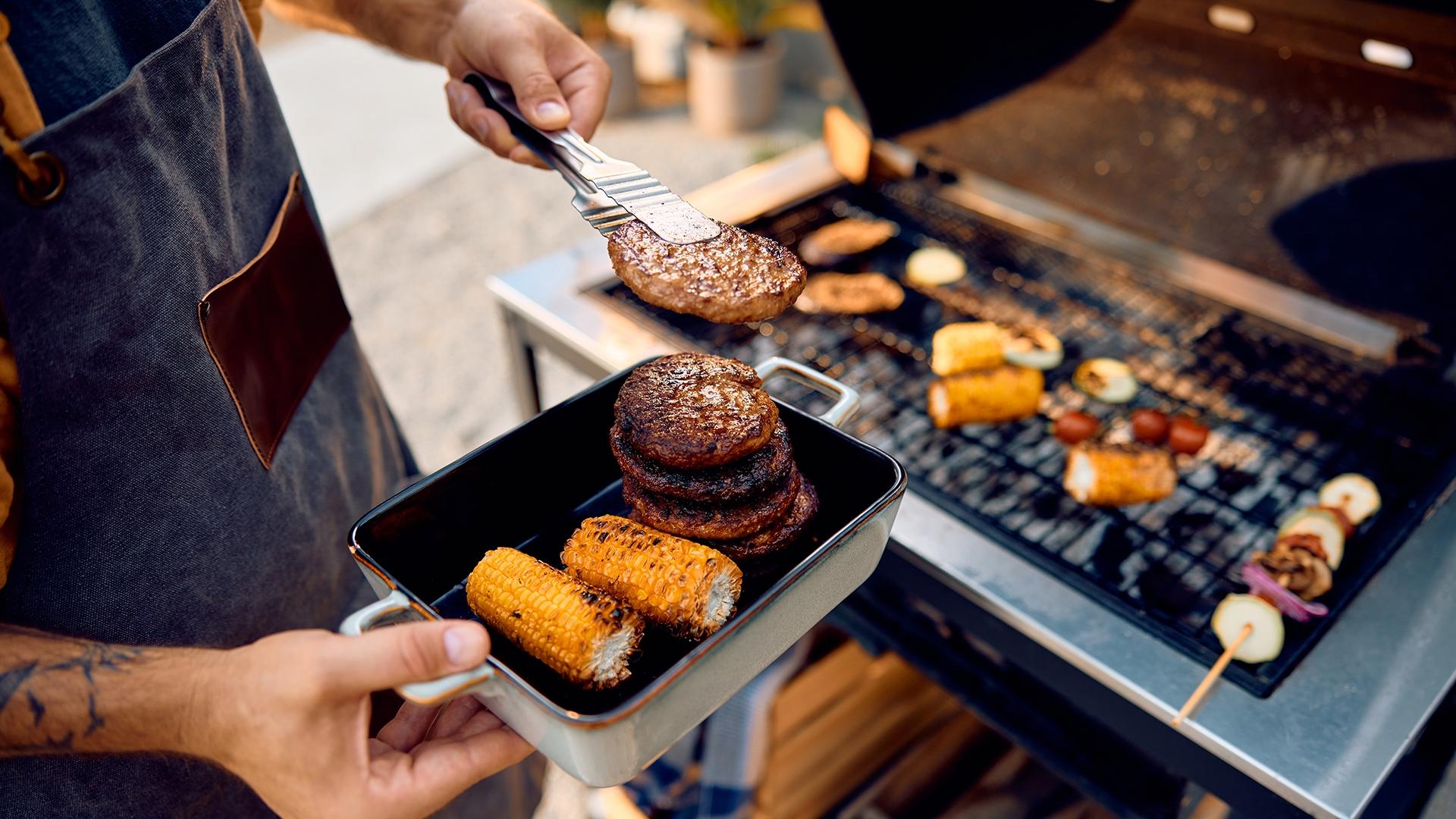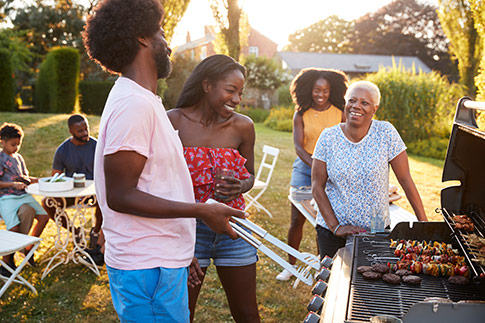Buying a barbecue? Let us help!

Barbecues can be powered by a number of different fuels. Each has its pros and cons. Find out what they are so you can choose the best barbecue for you.
The different kinds of barbecues
Barbecues can be powered by a number of different fuels. Each has its pros and cons. Find out what they are so you can choose the best barbecue for you.
Barbecue components
Once you’ve chosen the type of fuel, it’s time to look at the barbecue’s structure, ignition system, burner(s), grill grates, and so on.
Choosing the right structure for your barbecue: Steel, stainless steel or cast iron?
The range of stainless steel barbecues is extensive, although enamelled steel is well suited to charcoal models.
Beware of cheap shiny stainless steel barbecues. The quality of the metal is likely to disappoint. There are two main grades of stainless steel: 304 and 430. Grade 304 is considered quality steel.
Steel is stronger and more durable, and helps maintain the temperature nice and even while cooking. With grade 430, the steel contains more iron, making it more susceptible to rust and damage.
Good to know: Some low-end models may have a black-painted sheet-metal base. However, sheet metal rusts!
Make sure the housing is solid and the cover closes tightly. Also look for a fairly deep grill body. Larger sizes distribute heat more evenly over the cooking surface and reduce flare-ups.
Side tables: Make sure there is enough workspace for dishes and cooking utensils. Make sure they are stable. Folding and removable side tables are often flimsier than fixed ones.
Barbecue burners: Just how many do you need?
Barbecues usually come with one to four burners. The more burners, the larger the cooking area will be. Independent burners with individual temperature controls are preferable. They let you cook food at different temperatures at the same time. A single burner can also be used for indirect cooking.
A rear burner is useful for roasting: its position minimizes flare-ups, thereby minimizing the build-up of cancer causing substances. The side burner is great for heating a sauce in a pan or cooking a side dish. Some high-end models are equipped with infrared side burners, which are great for searing steaks quickly.
BTU rating: What’s the most effective power?
Burner power is expressed in BTUs (British thermal units). Gas-powered barbecues usually generate between 25,000 and 60,000 BTUs.
In general, the better your barbecue, the lower your BTU requirements. High-quality units use heat more efficiently and distribute it more evenly throughout the barbecue. It means you need fewer BTUs to produce a nice, even heat. A well-designed barbecue that generates 25,000 BTUs will produce better results than a low-end barbecue that generates 40,000 BTUs.
Cooking surface: What size for you barbecue?
The total cooking surface on a barbecue is measured in square inches and usually ranges from 240 sq. in. to 611 sq. in. This includes the main cooking surface and the warming rack.
To figure out what kind of surface area you’ll need, calculate about 60 sq. in. per portion. For example, you can prepare about seven portions at a time on a 400 sq. in. barbecue.
Cooking grates: Cast iron, steel or stainless steel?
There are many different types of barbecue grates. Low-end models have metal grates made with thin rods that are sometimes porcelain-enamelled. Mid-range barbecues are usually equipped with cast-iron grates that are sometimes enamelled.
High-end barbecues have stainless-steel grates with wide, closely spaced rods to better hold food. Wider rods also retain heat longer.
Cast-iron and stainless steel grates are recommended. Steel grates that are not porcelain-enamelled tend to rust. Also, because steel does not retain heat as well, the burners have to work harder to maintain proper heat during cooking.
Cast-iron grates are popular because they retain heat well. They even compensate for less effective burners because less heat is required. However, there’s one downside: it takes longer to lower the temperature of a cast-iron grate.
Stainless steel grates are rust-resistant and change temperature quickly, but thinner ones can turn brown and are difficult to clean.
Ignition systems: How to choose the most reliable?
Barbecue wheels: Go for stability
Barbecues with two wheels and two fixed legs are more stable, while units with four wheels are easier to move.
Choosing your barbecue
Once you’ve looked at the different types of barbecues and their parts, it’s time to choose the one that’s right for you. Think about your needs and your budget.
Think about how you’re going to use it, and what style of cooking you prefer. It doesn’t do you any good, for example, to choose a large cooking surface if you rarely have guests over. Here are the key questions to ask yourself when choosing the best BBQ:
Do you plan to use it every day or just occasionally?
Do you need a large cooking surface?
Do you prefer grilled or spit-roasted meat?
What is your budget?
What type of fuel do you want to use?
And of course, to ensure your barbecue lasts a long time, it’s important to keep it in good shape.
Thanks to BBQ Prestige for its collaboration on this article.

Benefit from personalized advice
Do you have questions about your home, need specific information, or are you looking for referrals to find an Approved Supplier?
